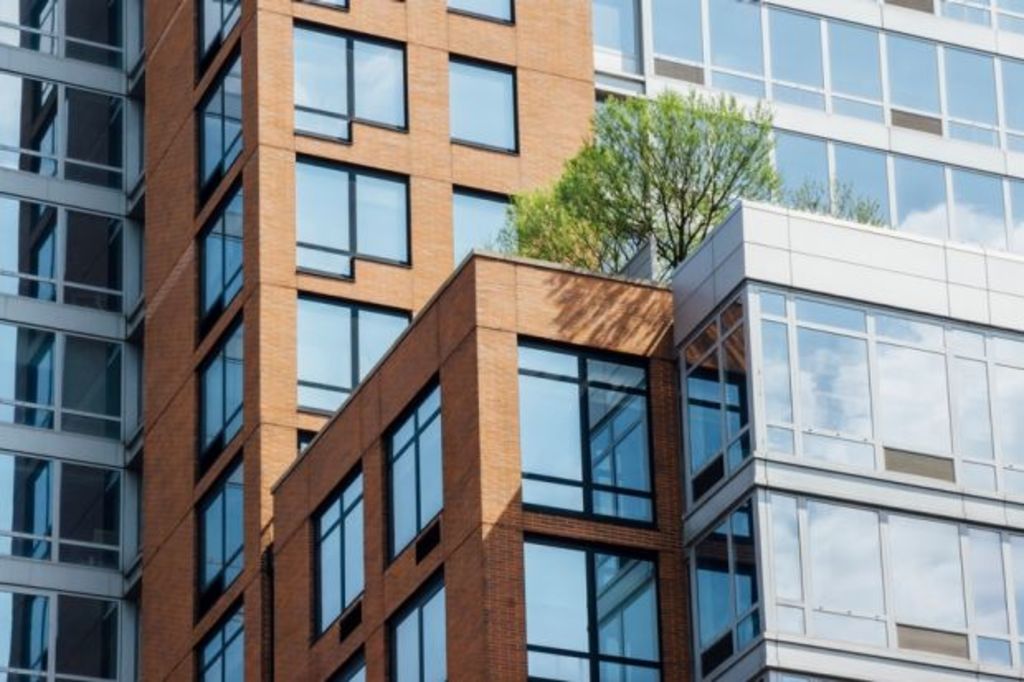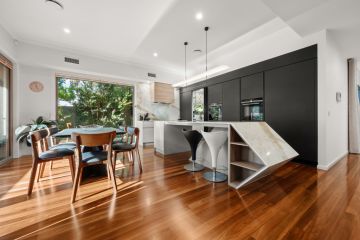How to create a greener and more energy efficient home for less than $50

Normal
0
false
false
false
EN-AU
JA
X-NONE
/* Style Definitions */
table.MsoNormalTable
{mso-style-name:”Table Normal”;
mso-tstyle-rowband-size:0;
mso-tstyle-colband-size:0;
mso-style-noshow:yes;
mso-style-priority:99;
mso-style-parent:””;
mso-padding-alt:0cm 5.4pt 0cm 5.4pt;
mso-para-margin:0cm;
mso-para-margin-bottom:.0001pt;
mso-pagination:widow-orphan;
font-size:10.0pt;
font-family:”Times New Roman”;
border:none;}
We all know how to recycle and use a water-saving shower head, but what are some other energy efficient ways to cut down on your emissions and bills?
If you don’t have the money (or your landlord’s permission) to install pricey solar panels, we’ve rounded up simple and portable ways that you can make a difference at home for less than $50.
-
Install pots of bee-friendly plants and herbs
Cost: $5-$35
If they go, we go too, so take inspiration from actor Morgan Freeman (who turned his property into a haven for bees) and help out our buzzing friends.
As urban flora disappears, Daniel Burke from Ceres Permaculture and Bushfood Nursery recommends having pots of bee-friendly plants in the courtyard, garden or – for you apartment dwellers – on the balcony or roof. “It supports bee colonies to have plants to forage,” he says.
Pots can be purchased inexpensively and taken with you if you move. “Bees love salvias – like Salvia leucantha, African Sky, Black and Bloom,” says Burke. “They also love purple flowers – they’re attracted to the colour purple – cottage plants like lavender and borage, and perennial herbs like rosemary and thyme.”
-
Leave out a dish of water for birds and bees to drink
Cost: $0+
It’s easy to forget that animals and insects need to drink, too. “Bees drink a lot of water as they use it in the production of honey,” says Burke.
Janet Hand from Birdlife Melbourne says that while we should never leave food out for birds, “they do need water”. Buy a birdbath like your nana had or use any bowl or container you have lying around. “I’ve got an old fry pan in the back garden and the birds love it,” says Hand.

Keep the food inside and leave water out for birds and bees. Photo: Mauro Grigollo
-
Use good-quality portable solar lightbulbs
Cost: $29-$39
No need to get pricey solar down-lights installed because the future is portable. Good-quality bulbs, like Nokero, will give you 2.5 to six hours of light every night and last for 10 years.
Simply charge the bulb in the sun during the day and then at night you can use the clip to hook anywhere in your house for emission-free light.
-
Turn your hot water down
Cost: $0
Heating the water for our showers and laundry are our homes’ biggest creator of greenhouse gas emissions.
To cut down emissions – and your bills – simply locate your hot water heating system and set the temperature to exactly 60°C (“to prevent growth of harmful Legionella bacteria” says Anne Martinelli from Environment Victoria) or 50°C for continuous hot water systems.

Bees are attracted to purple plants and flowers, so choose this colour for your garden. Photo: Stocksy
-
DIY insulation
Cost: $3-$50
We’re a land of extreme weather, but houses in Australia are often “glorified tents”, says Martinelli, “a big chunk of the money we spend on electricity and gas bills is just blowing out the window.” Insulation, she says, makes a big difference and can halve bills and emissions.
For those who don’t have pockets of cash, buy some draft sealing tape and plug up all the holes and gaps you can find. Martinelli also recommends “zoning the living spaces” by sealing off the room you spend most of your time and where the heating or cooling system is located. If there is no door, install heavy fabric or curtains in the doorway (try heavy-duty double-sided tape) so that the heating or cooling isn’t trickling into the unused rooms.
-
Put all your food waste into a compost bin
Cost: $0-$80
Food waste that goes into landfill creates methane which is 25 times more toxic than the fumes from your car. Avoid this by popping an inexpensive compost bin in the corner of your garden, or an indoor one on your kitchen bench if you are in an apartment, and chuck all your food waste in there, along with any green waste like lawn clippings and leaves.
For the truly cheap, just make yourself an old-fashioned compost heap. When it’s full and broken down, simply dig into the garden (or your pots of bee-friendly plants), and if you need to move house, simply rinse your bin and go.
We recommend
States
Capital Cities
Capital Cities - Rentals
Popular Areas
Allhomes
More







